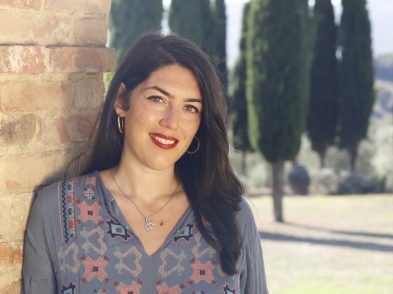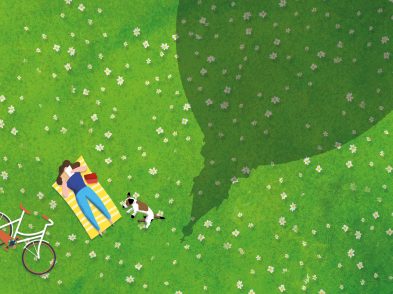Bestselling author Frances Mayes entertains us with anecdotes from her life in Cortona, and reading and writing tips ahead of the publication of her new book, A Place in the World.


Get the new book from Frances Mayes: A Place in the World
You wrote Under The Tuscan Sun back in 1996. How has your relationship with Cortona changed since then and in what ways has Cortona changed?
What’s really changed is travel because of the impact of the digital world. We recently stayed in Venice in an apartment that overlooked where three lanes of gondolas came together. There we were on a balcony, looking down at all these people, and they were all on their phones! You know they’re not looking at Venice. They’re calling somebody at home to share a photo. Maybe it’s just because I’m too cranky, but it feels like something has been lost. Cortona is busy. Everybody is traveling this year after being stuck at home for two years. 2022 requires a lot of patience, no matter where you are in Italy. My relationship with Cortona remains stable. It is a place of inspiration and beauty. By now, it is home.
I imagine you’re well integrated within the community after all these years of having a home in Cortona. Tell me about your relationship with the locals and what an average day is like for you.
I originally came here for the art, but as soon as I became settled, I realized that it was really the people that we came back for. We have lots of friends from the international community too, with dinners, wine tastings and trips together, but at least half of our friends are Italian. Our nearest neighbors are truly like family. One thing I love about Italians is how they have fun and joke. And that battuta, that back and forth, you’ve got to be sharp. Living in two countries is sometimes complicated—I feel like I married two men or something!
We can all agree about the joy, which is one of the reasons why so many people visit Italy and then actually decide to live here. Do you ever feel a sense of responsibility for that potential side-effect of Under The Tuscan Sun?
Not really. I know it happens—people tell me, we bought a place here, we came because of the book and we loved it. But then, after a couple of years, some people realize that learning Italian isn’t as easy as they thought. These beautiful stone houses can be cool in the summer, but maybe they’re not quite as enticing in the depths of January. I don’t really feel responsible because it takes a certain kind of person to thrive in a new environment. You need to have your priorities straight and know exactly why you’re there, and that’s something people have to discover for themselves.

The literary references that we read in your writing show that you’re a voracious reader. What are you reading at the moment? And what books have shaped you as a writer and your perspective on Italy?
Right now, I’m reading Beppe Severgnini’s Italian Lessons. I picked it up in Florence train station and I found that it was dedicated to his editor, who was also my editor. I almost started crying because this editor died very young last year. Beppe’s book is a tribute to Italy during Covid. I think he wrote it out of a new appreciation for his own country. I’m also reading Orwell’s Roses by Rebecca Solnit. I’m a gardener and it shows a side of Orwell that I never knew about. But I continue to go back to the great travel writers: Lawrence Durrell, Freya Stark and particularly Ann Cornelisen, who lived in Cortona when we first moved here. I try to be as observant as these writers are.
What’s your travel writing process?
I take a whole lot of notes when I arrive in a place: take a long walk, get up early and see the place come alive. For a while, I became addicted to taking photos on my phone and I started using them as a way to take notes, but it wasn’t a good idea because the words are better for me when they’re immediate. I try to get my bearings down in words.
You were a professor of literature for many years. What advice would you give to an emerging writer?
My advice for young writers is to find like-minded souls, people who are equally devoted to the written word. Share the work and create a community of writers. The second thing to do is cultivate friendships among people who appreciate beauty, art and culture. Other than that, read and read again. Read the first time to enjoy it and the second time to see how it was done. Ask yourself, how was it put together? What made it a good book? Underline beautiful sentences. When I’m reading for the second time, I keep a list of words I like that I haven’t thought of in a while.

When we think of you, we think of Tuscany. But you’ve written widely about Italy, especially in your penultimate book, Always Italy, which you co-authored.
It takes more time when you have a co-author because you have to run everything by them first. On the other hand, it’s very helpful. I worked with Ondine Cohane, who lives in Pienza. She’s a travel writer for the New York Times and Condé Nast. We divided the task, which took about two years to complete. Ed and I went to every region of Italy and that was such a treat. It made me realize how unfaithful I could be to Cortona! I found so many places where I could live in Italy. Trento, call the moving van! What a wonderful city. Loved parts of Puglia. Way up in the northwest corner of Italy, I never really thought I wanted to go there. We fell in love with that whole area and the Dolomites. It was just a constant sense of discovery: down in the depths of Calabria; little islands off Sardinia. I was working with National Geographic, so this book has more than 300 photographs. It took a tremendous amount of research. We would plan the next place we were going and I would spend a couple of weeks reading about the region, deciding where to go and mapping it out. Also reading the local writers. We went to Turin and actually stayed in the home of Cesare Pavese.
Home is a motif for you. Now you have a new book coming out, which is all about defining our four walls. Publishers Weekly has called it “A rich testament to the pleasures of wanderlust and permanence”. For me, it reads like a memoir of memoirs. Can you tell me about A Place in the World?
It was a product of being at home during the last three years. Almost everyone had the experience of looking at their home and thinking, Is this where I want to be forever? Is this someplace I want to leave? I realized that as much as I’ve written about places and travel, I’ve always written about home as well. I came from a very small town in the South with a taproot that went down very deep; nobody in the family was ever supposed to leave this place. I took the first thing smoking on the runway out of there, but I’ve always had this real taproot sense of home. During Covid, we lived on a farm in North Carolina. It was the house we knew we were going to live in forever, but during the pandemic, we thought, We gotta get out of here. It surprised us so much, but we realized how much of our lives we were devoting to keeping it going. Ed was constantly out dealing with the 152 irrigation spouts. So, we decided to sell it. We thought this complicated property would take at least a year for it to sell. We took a deep breath, put it on the market, and it sold the very first day. All these things were going on when I was thinking about home. Why is it that you check into a little hotel on Giglio and suddenly you think I could live here? What is that I could live here? And who does it happen to? What is this mania about home and why am I so house-obsessed? It’s more an exploration than an answer.








